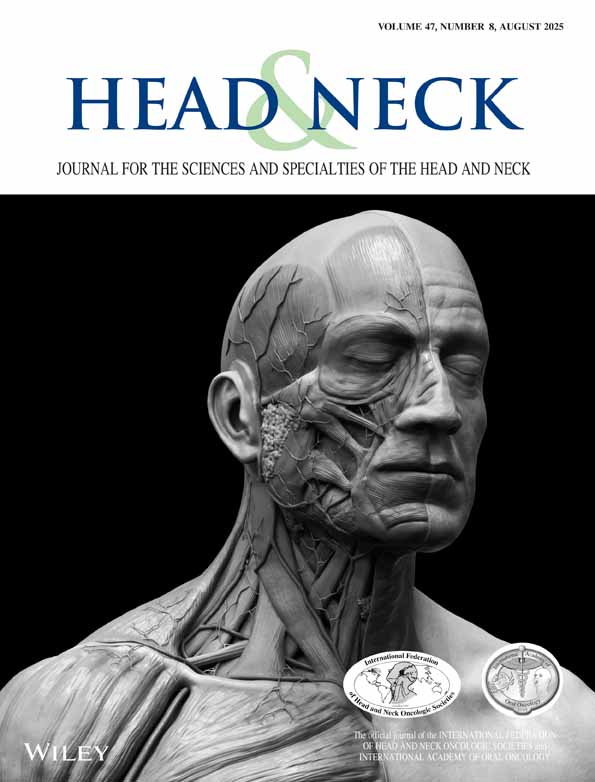CO2 laser treatment of supraglottic cancer
Abstract
Background.
The aim of the study was to evaluate the effectiveness of endoscopic CO2 laser microsurgery in the management of supraglottic cancer.
Methods.
One hundred twenty-four patients (116 men and eight women; mean age, 59 years; range 31–81 years) with supraglottic cancer underwent CO2 laser surgery (mean follow-up 5 years). The study patients were classified as follows: 45 patients, T1N0M0; 61 patients, T2N0M0; and 18 patients, T3N0M0. According to the staging, the following procedures were adopted: epiglottectomy, resection of aryepiglottic fold or false vocal cord in T1 patients (group A); resection of the false vocal cord and adjacent structures in T2 patients (group B); and supraglottic laryngectomy in T3 patients (group C). Statistical comparison of survival parameters was carried out with Wilcoxon test, considering p < .05 the minimum significance value.
Results.
Overall actuarial survival, adjusted actuarial survival, and no evidence of disease at 5 years were 91%, 97%, and 82% in group A; 88%, 94%, and 59% in group B; and 81%, 81%, and 51% in group C, respectively. The statistical analysis of survival parameters showed a significant difference in the comparison of T1 versus T2 and T2 versus T3 tumors (p < .01). Actuarial local control, actuarial nodal control, and actuarial distant metastasis control at 5 years were 82%, 82%, and 100% in T1 patients; 63%, 90%, and 98% in T2 patients; and 77%, 75%, and 93% in T3 patients. Laryngeal preservation rate was 88.6% in T1 patients, 85.4% in T2 patients, and 93.7% in T3 patients. Patients in groups A and B were discharged after 3 to 12 days, and patients in group C, were discharged after 14 to 20 days.
Conclusions.
The results of this study show that endoscopic CO2 laser surgery is highly effective in the treatment of T1 and T2 supraglottic cancer. In T3 cancer, the CO2 laser should be implemented in those cases where radical excision by endoscopic route is feasible. © 2004 Wiley Periodicals, Inc. Head Neck 26: 442–446, 2004




